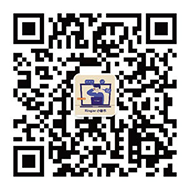In recent years, Southeast Asia has seen a significant surge in support for the new energy vehicle industry. As the region's automotive industry chain and supporting infrastructure have become more robust, the economic advantages of setting up factories in Southeast Asia have become increasingly evident. Consequently, the new energy vehicle sector in this market has entered a promising new phase. Since 2023, Chinese new energy vehicles have swiftly penetrated Southeast Asian export markets.
Data from automotive industry research institutions indicates that by May 2024, prominent Chinese new energy vehicle brands, such as BYD, SAIC MG, GWM, Changan, GAC, Chery, NETA, and Geely, have established a presence, invested in factories, or commenced production in Southeast Asia. Thailand has emerged as the top destination for these ventures, followed by Malaysia and Indonesia.
In 2020, Thailand formed the National Electric Vehicle Policy Committee (NEVPC). In March 2021, the NEVPC released an ambitious plan outlining a vision for 2035. The plan emphasizes the development of zero-emission vehicles, next-generation automotive technologies, and business model innovations to create a comprehensive electric vehicle industry chain.
Source materials play an indispensable role in the evolution of the electric vehicle industry. With over 120 years of expertise, Dow, a leader in materials science, has consistently been at the forefront of the transportation sector. Dow has been continuously innovating material technology solutions to support the next generation of mobility. These innovations help OEMs (original equipment manufacturers) overcome challenges in safety, interactivity, and electrification, fostering the sustainable development of vehicles.
From thermal management and protection solutions that safeguard e-power system, battery systems and Advanced Driver Assistance Systems (ADAS); to support for ultra-fast charging at stations, Dow’s high-performance silicone provides comprehensive solutions. Additionally, products such as silicone synthetic leather and self-sealing silicone for tires contribute to the sustainable development, luxury sense and innovation of motor vehicles.

Scan the QR-code to Explore Dow's Material Innovations Across Broad Application Spaces
Fostering Advanced Power Electronics
As a new era of e-mobility rises, so does the need to advance the durability and safety of vehicle electronics. EVs rely heavily on power electronics to efficiently manage energy flow, enhance performance, and optimize overall system efficiency.
Informed by decades of experience in electronic control units (ECUs) and power electronics, Dow’s broad range of DOWSIL™ and SILASTIC™ technologies can be tailored to hit customers’ ideal performance aspects. With thermal conductivity, easier processing, next-level durability, corrosion-resistance, proper insulation for high-voltage systems, and more, Dow’s automotive power electronic solutions can help drive the industry towards the future of low-carbon mobility.
The major applications of Dow’s high-performance silicone solutions include inverter / converter, on-board battery charger, e-motor and control units.
- Inverter / converter: EV power electronics systems are critical for electric vehicles to increase range and have reliable performance their lifetime. Silicones are the material of choice to handle high temperature and high voltage in harsh environment conditions that include salt spray, shock, vibration and more.
- On-board battery charger: DOWSILTM thermal gap fillers, adhesives, gels and SILASTICTM silicone elastomers are used in power electronics systems like on-board chargers.
- E-Motor: DOWSILTM thermally conductive adhesives and encapsulants offer proven performance for E-Motor applications. These materials will help to extend component life to increase durability and reduce service requirements.
- Control units: Dow’s innovative silicone materials play a crucial role in enabling control units to achieve efficiency, safety and sustainability upgrades.

Creating a Safety Shield for Batteries
Electric vehicle battery safety incidents, stemming from high temperatures, collisions, and overcharging, underscore thermal runaway as a critical safety issue. Dow's DOWSIL™ advanced silicone materials designed for battery fire protection offer robust thermal stability. These materials ceramicize under high temperatures, demonstrate low flammability, and ensure high reliability throughout multiple charge/discharge cycles.
Dow offers a comprehensive range of silicone materials for battery fire protection, including battery pack potting, thermal insulation layers, electrical-grade protection, EV-specific gaskets/sealants, and fire-resistant explosion-proof silicone coatings. These solutions are tailored to enhance the durability and lifespan of various battery module types and configurations.
In addition to its product offerings, Dow offers a comprehensive suite of materials, simulation environments, and application scenario testing methods. This expertise effectively supports battery manufacturers and OEMs in selecting appropriate materials and optimizing battery performance.
Strengthening the Reliability of ADAS Components
As consumer demand for automotive safety and intelligence grows, the adoption of ADAS is on the rise. ADAS manufacturers are setting higher benchmarks for linearity, sensitivity, repeatability, quick response, resolution, and stability in the assembly process. The choice of materials is crucial, as it directly impacts the reliability of ADAS products. Moreover, as ADAS products become more integrated and the need for greater computational power grows, the demands for thermal management materials have intensified, requiring continuous innovation and upgrades of these products.
Dow offers a diverse array of DOWSIL™ thermal management products with varying thermal conductivity levels, including the award-winning DOWSIL™ TC-6032 thermally conductive encapsulant, recognized by the BIG Innovation Award, and the recently globally unveiled DOWSIL™ TC-6040 thermally conductive encapsulant. DOWSIL™ TC-6040 boasts the highest thermal conductivity on the market at 4.0 W/m·K, alongside low viscosity and excellent flowability. This enables it to penetrate narrow spaces and encapsulate small electronic components, providing comprehensive protection for ADAS. It is ideal for use in highly integrated ADAS devices that demand high thermal conductivity, aligning with trends in automotive component integration, miniaturization, and lightweight designs.Besides thermal management, Dow offers high-performance silicone solutions for electromagnetic shielding, reliable sealing, and specialized protection for ADAS. These solutions help customers tackle the challenges of designing next-generation sensor systems in a cost-effective and efficient manner.
Empowering the Future of Supercharging Technology
Addressing range anxiety is a prevalent concern among consumers of new energy vehicles. To enable an advanced fast-charging experience, vehicles require electronic and electrical architectures capable of supporting high voltages for transmitting currents exceeding 600 A, facilitating charging power levels surpassing 480 kWh. Moreover, upgrading charging stations is imperative: supercharging stations necessitate high-power outputs, rapid cooling, and robust durability, underscoring the critical importance of material selection. Advanced solutions for thermal conductivity, sealing, insulation, and flame retardancy are required, and Dow is exploring performance advancements of silicones in these areas.
Dow focuses on three key areas in the charging facilities domain.
- Thermal Management: Dow offers a wide range of DOWSIL™ products such as gap fillers, adhesives, non-curing compounds, immersion cooling fluids, gels, and encapsulants to tackle thermal management challenges in charging facilities.
- Protection and Assembly: Dow provides adhesives, sealants, and conformal coatings to ensure comprehensive protection for charging components during assembly and operation.
- Insulation and Thermal Conductivity: Dow supplies SILASTIC™ elastomers, high-consistency silicone rubbers (HCR), and liquid silicone rubbers (LSR) to meet insulation and thermal conductivity requirements in charging infrastructure.
Brighten Up To New Seat Design With Luxury Sense
Known for its soft touch and breathability, general leather offers premium texture and comfort. However, it also has some distinct disadvantages, including weak UV resistance, poor crack and anti-aging resistance, and fragility. Other kinds of synthetic leather, by contrast, are durable but unable provide high-end or luxury sense and with the problem of hazardous, irritating odor emissions.
In order to solve these problems, Dow has developed LuxSense™ silicone synthetic leather – alternative synthetic leather solution that offers comfort, health, and luxury, all while offering enhanced sustainability. It boasts a soft, easyto-clean texture, with neutral scent, robust durability, and a low-carbon, environmentally-friendly footprint. LuxSense™ silicone synthetic leather stands as the world’s premier high-end material approved for diverse applications, notably vehicle seats and interiors. It excels across four essential dimensions:
- Sense of Sight: Long lasting performance, color personalization, excellent weatherability, easy-to-clean, abrasion resistant, enables design freedom.
- Sense of Touch: Desirable soft touch, skin friendly, non-tacky, comfortable across applications.
- Sense of Smell: Odorless, low-VOC, inherently flame resistant, solventless.
- Sense of Sustainability: Low carbon emissions cradle to gate, solvent-free fabrication processes, animal free.
From mobility to fashion, this award-winning silicone synthetic leather indulges the senses in critical applications demanding both luxury and performance.
Achieving “Safety” and "Sustainability" Through Innovation
With growing demands for driving safety and material circularity in the global automotive industry, self-sealing tires are becoming a new solution which enable lighter weight vehicles as well as more safety.
SILASTIC™ self-sealing silicone for tires is an internationally pioneering solution that can create a self-sealing layer on the inner surface of tires. When a tire punctures, the semi-liquid sealing material flows to the puncture site, swiftly sealing it and preserving normal tire performance, which enables driving for long distances without loss of tire pressure. This solution provides more supports and possibilities of safer driving.
In additional, The use of SILASTIC™ self-sealing silicone eliminates the need for spare tires, reduces vehicle weight, boosts fuel efficiency, and allows for recycling once the tire reaches the end of its lifespan.
Conclusion
In the realm of engineering design, quality materials serve as the foundation for swift construction across various facilities and equipment. In the age of smart electric vehicles, the ongoing evolution of components demands advanced material technologies. Today, companies such as Dow are forging close partnerships with automakers and end-users alike, accelerating the innovation cycle of product technologies. This collaboration aims to meet the distinctive requirements and rapid expansion of diverse regional markets.














